Monday, April 4, 2011
The CCC State-By-State: Illinois
Note: Google Blogger refuses to properly format this entry so the paragraph breaks and the individual camp totals and project totals are fouled up. I've tried three times to repost this piece to make it read properly but without success. I apologize for the difficulty and I will continue to remedy the formatting problem. Perhaps it's time to change to a different blogging system. Illinois was situated in the Sixth Corps area, along with Michigan and Wisconsin and according to Perry Merrill writing in Roosevelt’s Forest Army, a total of 92,094 individuals worked in the CCC in Illinois, regardless of their state of origin. The Annual Reports give some indication of enrollment totals in the state of Illinois. For example the Annual Report of the Director of Emergency Conservation Work for fiscal year 1937 breaks out the monthly enrollment totals for Illinois as follows: July 1936: 18,334 August 1936: 17,400 September 1936: 14,368 October 1936: 17,315 November 1936: 16,316 December 1936: 15,554 January 1937: 18,226 February 1937: 17,386 March 1937: 11,127 April 1937: 13,391 May 1937: 12,304 June 1937: 10,890 Remember that these are monthly totals for the number of enrollees who joined the CCC in Illinois – not a total of enrollees actually working in Illinois on a month-to-month basis. In Roosevelt’s Forest Army, Perry Merrill notes that an average of 54 CCC camps operated in Illinois, which is significantly lower than the 70 camps listed in the Annual Report for fiscal year 1937. During roughly that same period (July 1936 through June 1937) the distribution of CCC camps by technical service was reported in the Annual Report as follows: National Forest camps: 8 Private Forest camps: 1 Agricultural Engineering camps: 6 Soil Conservation camps: 27 State Park camps: 27 Military Reservation camps: 1 Merrill’s camp totals for the period ending September 30, 1937 are as follows: National Forest camps: 8 Private Forest camps: 1 Agricultural Engineering camps: 5 Soil Conservation Service camps: 4 State Park camps: 27 Military Reservation camps: 1 Clearly there is a flaw in the data somewhere given that the numbers reported are so significantly different. It doesn’t seem feasible that the Soil Conservation Service lost some 23 camps between the time that the 1937 Annual Report was released and when the camp numbers that Merrill cites came out in September of that year. This is just one example of how difficult it can be to square some of the number totals associated with the Civilian Conservation Corps; heck, historians can’t always agree on how many enrollees actually served in the CCC for that matter. The Annual Report of the Director of the Civilian Conservation Corps, 1939 breaks out the average number of camps in Illinois as follows: State Park camps: 20 National Forest camps: 4 Agricultural Engineering camps: 5 Soil Conservation Service camps: 20 It’s interesting to note that this Annual Report includes an error in the total average number of camps in Illinois by technical service. When you total the individual technical service totals you get a total of 49 camps but the total cited in the chart (Appendix H) lists 50 camps in Illinois. Which brings us back to the question of accuracy in the historic record, which may never be completely squared with reality three-quarters of a century after the fact. The 1937 Annual Report also includes a state-by-state list of specific projects accomplished and here are some totals for specific work projects accomplished in Illinois between July 1936 and June 1937. Vehicle bridges: 18 Foot bridges: 15 Horse bridges: 4 Stock bridges: 1 Lookout towers: 3 Trailside shelters: 11 Cabins: 16 Firebreaks: 93.5 miles Fire suppression: 23,779 man-days Emergency wildlife feeding: 2,394 man-days Bear in mind that this is just a snapshot of a single year’s accomplishments. Merrill notes that over the life of the lifetime of the program, the CCC was responsible for the following totals in Illinois alone: Bridges (all types): 394 Trails (all types): 1, 192 miles Trees planted: 32,938,000 It’s interesting to note that if we take the total number of bridges built during fiscal year 1937 (38) and multiply it by 9.5 (the approximate lifespan of the CCC) we get a total of 361 bridges built by the CCC in Illinois, which is pretty close to the total reported in Merrill (394). All told, Merrill estimates that some $36 million in allotments went to dependents of CCC enrollees in Illinois. In 1934 the American Forestry Association published a book entitled Youth Rebuilds: Stories From the C.C.C., which is a collection of personal narratives from CCC enrollees around the nation. Included in the collection is a piece entitled “A Task, A Plan and Freedom,” by James Kidwell, an enrollee in Company 1659 at Rushville, Illinois. Kidwell, who’d spent several years on the “bum” riding freight trains across the country in search of work, was recruited into the CCC by a social worker in Springfield, Illinois and he wrote, in part: My troubles are drowned by hard work. In forestry I have, for the first time, found a profession that appeals to me. So far as freedom is concerned, in what place could I hope to find more isolation from the cares that imprison civilization than in the endless solitudes of the forest? Larry Sypolt’s book Civilian Conservation Corps: A Selectively Annotated Bibliography includes references to source material related specifically to Illinois, including: “An Historical Study of the Civilian Conservation Corps in Illinois,” a Master’s thesis by Frank Mance while a student at Western Illinois University in 1967. Archeology is another field of work that the CCC was occasionally involved with in states across the nation and, perhaps somewhat surprisingly, Illinois is an example of a state where CCC enrollees conducted archeological work. A set of articles in the September 2008 edition of Illinois Antiquity (Vol. 43 Issue 3) details some of the archeological work done by New Deal agencies in Illinois and while the WPA, the Illinois State Museum and the Illinois State Division of Parks performed the bulk of the excavation work, the CCC performed archeological excavations at three locations in Illinois: Abraham Lincoln’s New Salem State Park (Camp DSP-7), Lincoln Log Cabin State Park (Camp SP-58 or perhaps SCS-5) and Pere Marquette Sate Park (Camp SP-9). Reportedly, archeology work at New Salem and Lincoln Log Cabin State Parks was conducted for the most part by untrained CCC enrollees who simply documented the location and size of features. At Pere Marquette State Park a trained graduate student, with the assistance of CCC enrollee George Maynard, worked 12 weeks in the field to document and excavate prehistoric remains that were unearthed by CCC workers digging the foundation for a park lodge building. Sadly, according to the article in Illinois Antiquity, most of the artifacts have been misplaced in the years since they were unearthed in the 1930s. Reportedly, the only significant artifacts from the site are those uncovered during the initial discovery and excavation by the workers who were building the lodge structure. Not surprisingly, the same is true of the work at New Salem. In one of the articles that appeared in the September 2008 issue of Illinois Antiquity, Robert Mazrim noted that “very unfortunately, there is no evidence of any systematic attempt to record and retrieve artifacts during this period, and very few archaeological objects survive.” Mazrim goes on to describe the CCC’s archeological work at New Salem as “a mixed blessing,” because while the work reconstructed a 19th century village that was once home to future president Abraham Lincoln, the work obliterated much of the original town site and the artifacts that were collected have largely been lost or are not particularly useful because of sloppy documentation. (For my part, I don’t blame the CCC enrollees for these sorts of mistakes. The work of the CCC enrollees everywhere, no matter what the work, was only as good as the foremen and supervisors who were in charge of the project. If blame must be placed, let it fall at the feet of those where were in charge at the time.) For a list of Illinois CCC camps you can visit the CCC Legacy website, HERE. For the section of the U.S. Forest Service administrative history of the CCC that includes information on work in Illinois, click HERE. The April 20, 1935 issue of Happy Days reported on the death of Don Rutherford, an enrollee in Company 613, Marseilles, Illinois, killed while working in a “sand pit.” Just four months later, (August 10, 1935) Happy Days reported on the death of Guy Ellsworth Lagg, an enrollee in Company 639 at Camp Skokie Valley. Lagg was reportedly killed by lighting. The November 2, 1935 issue of Happy Days reported on the death of Mess Steward Cordell Gibson. Gibson, a member of Company 3676 at Lawrenceville, Illinois, was killed in a car crash. As always, the state CCC camp map was taken from a larger map in Cohen’s Tree Army. I simply isolated Illinois and highlighted the camp locations to make it easier to read. To get an idea of the plan and scope of the State-By-State series, read the initial post here.
Subscribe to:
Post Comments (Atom)

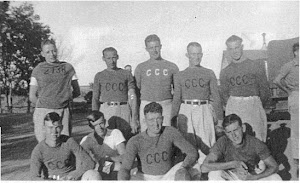

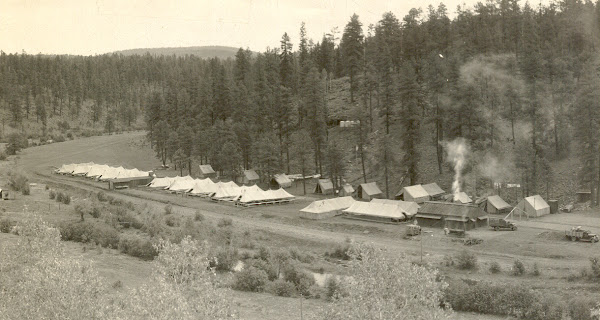
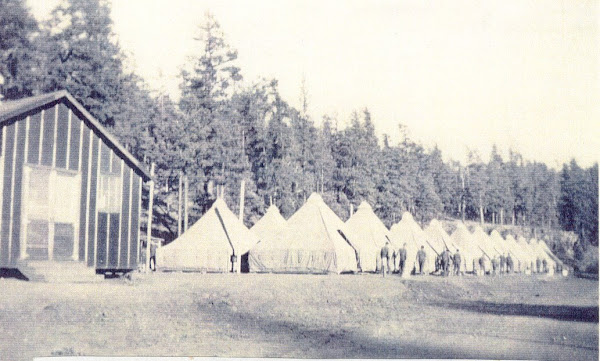
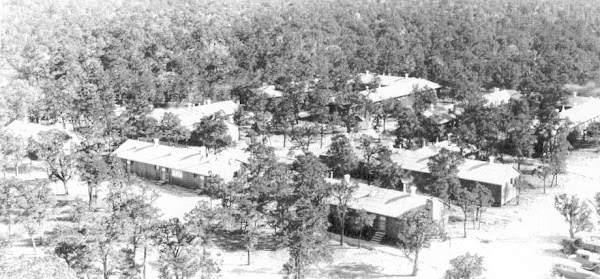
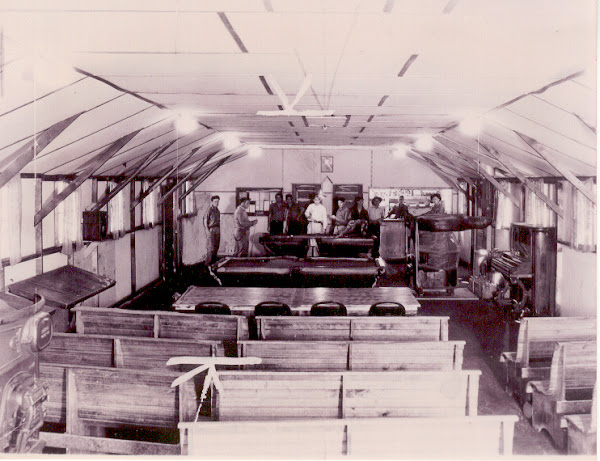
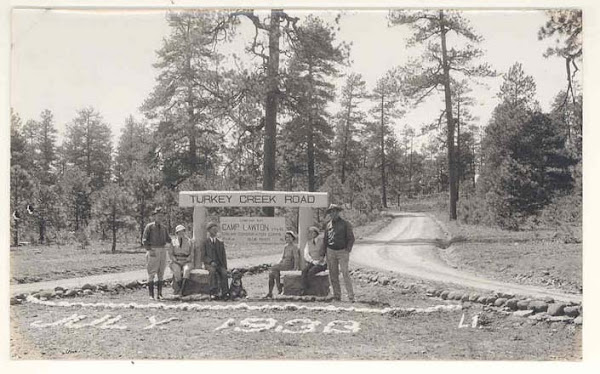
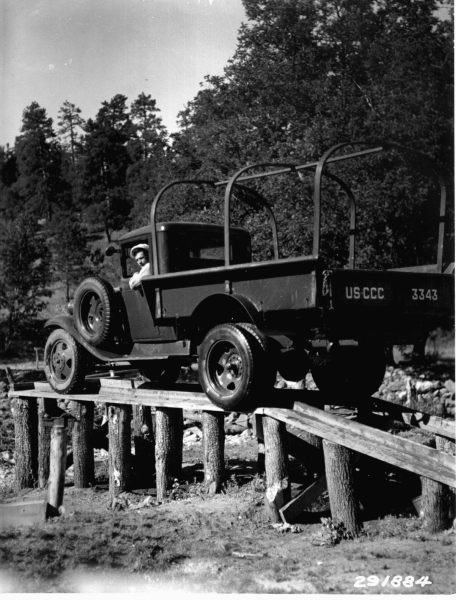
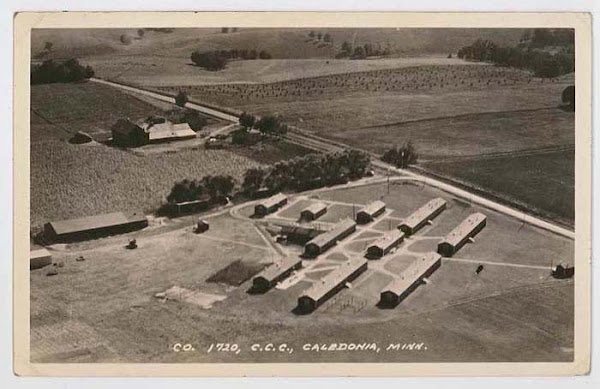
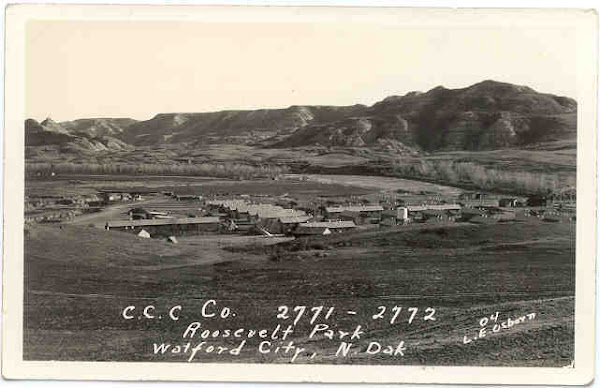
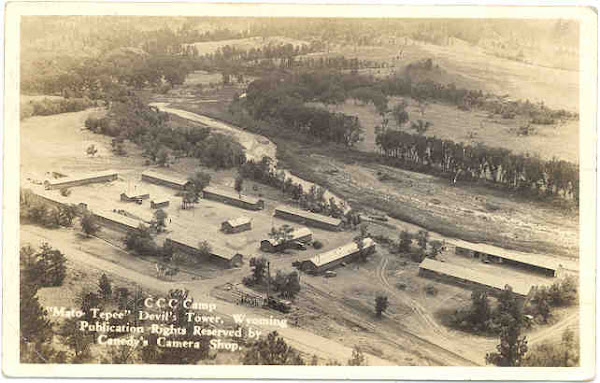
No comments:
Post a Comment